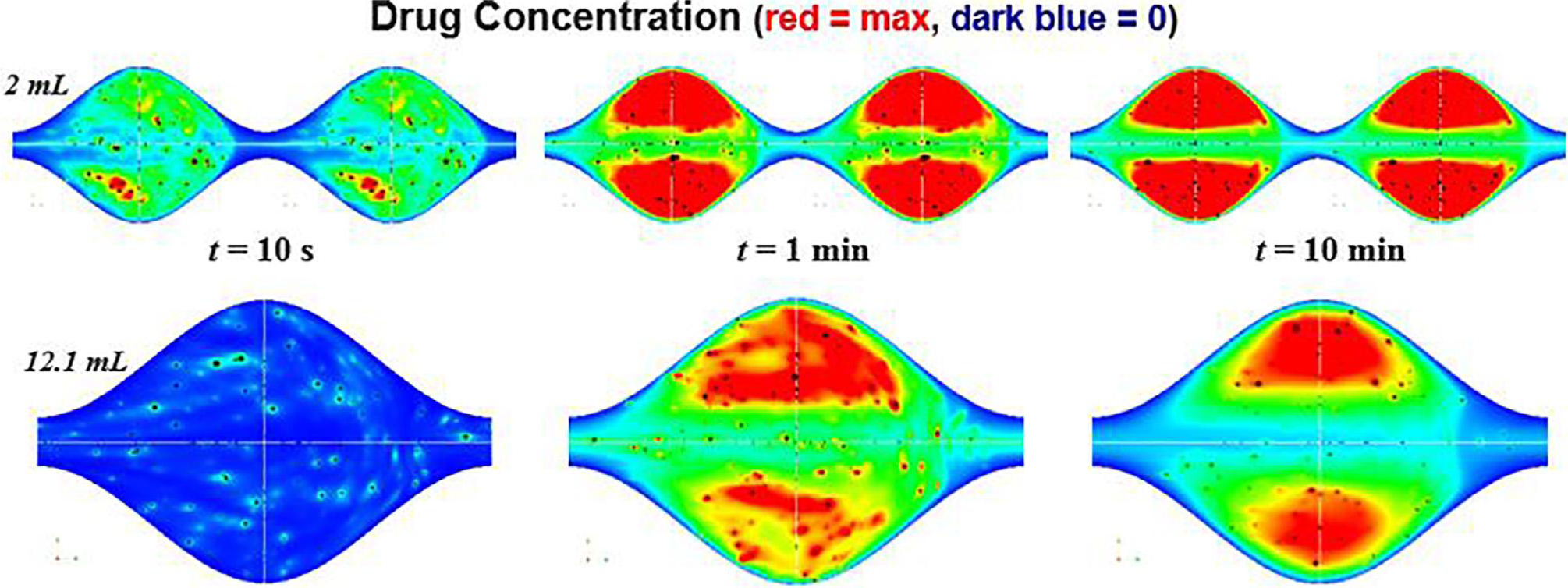Fig. 5.

Drug concentration at cross section of the intestinal pockets for large and small volumes and with the maximum permeability boundary condition at different times during the transition from an initial state when no drug has been released into the bulk fluid to a quasi-steady state period when the structure of the concentration field remains roughly constant in time. Maximum concentration is shown in dark red and zero concentration in dark blue in a frame-of-reference moving with the peristaltic waves. The quasi-steady period starts earlier with smaller pocket volumes and lasts for 50–60 min before a long-lasting final period over which all particles have dissolved and all released drug molecules have been absorbed (end simulation run: 180 min). Both drug concentration and particle concentration (not shown) develop a highly heterogeneous distribution as a result of the motility-forced velocity field. In this “max permeability” scenario, absorption results from a balance between transport (advection) into a central “bubble” of recirculating flow and diffusion of drug molecules from the recirculating bubble across a narrow fluid layer to the mucosal surface.
